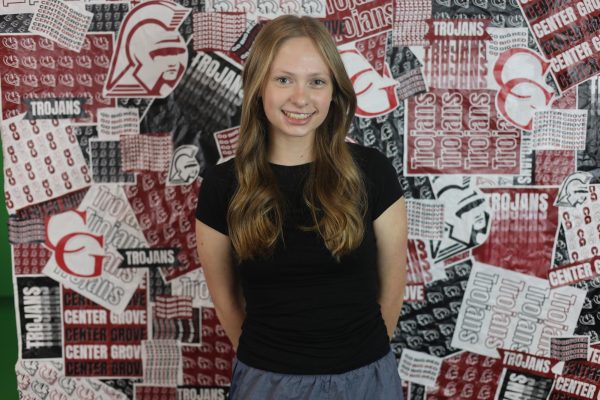Sophomore Kyra Hastings has been doing dance for nine years and competitive dance for seven. Four years ago, she started dancing at Le Rose Dance Academy and has fallen more in love with the sport ever since.
“This is my fourth year at LRDA,” Hastings said. “I love it because it’s a smaller studio and you get a lot of attention there. They really care about each dancer and we all feel like a family. They always make sure that you’re ready for each competition and will do everything necessary to prepare you. Switching to LRDA motivated me to keep dancing. I love it.”
Over the past four years, Hastings has competed in numerous competitions and performed in several recitals.
“A competition is where we’re competing against other dance studios, and a recital is where we’re just performing for our family,” Hastings said. “I have six different competitive dances and four competitions a year. Our competition season starts in March and ends in May. We go to Nationals every other year, which is normally in June or July. I love performing for the judges and my family.”
There can be a lot of work involved in the process of learning each dance and preparing it for competition.
“I have practice in the studio three times a week,” Hastings said. “I have some technique classes and some where we work on choreographing and cleaning up the dance to make it look better. It takes around five months to learn our dances.”
While practices with the team as a whole are a big part of making sure a dance is ready for the stage, time on one’s own is often necessary to tweak flaws in one’s personal performance.
“When I’m not at the studio, I practice at home,” Hastings said. “I got gifted a square of marley, which is the type of floor we dance on, to practice my turns. I also have a gymnastics mat to practice tricks like ariels and walkovers. I try to practice every day.”
When it comes time to perform the dances that took months of hard work to prepare, it’s not as intimidating for Hastings as many may expect.
“It’s a lot different than you think,” Hastings said. “A lot of people wonder ‘How do you do it?’ ‘How do you memorize everything?’. The truth is, we do it so often that it becomes muscle memory. When I’m on stage and doing the dances, I’m not thinking. Sometimes I’ll freak out beforehand and forget the dances, but once the music turns on it all comes rushing back.”
Dancing with a team where everyone is so close can make competition season much easier and exciting.
“Before each competition we have a pep rally,” Hastings said. “They get the energy flowing in the team and help to prepare us before the competition. I’m a part of the Rosettes, which is our fully competitive team. Judging is based out of 300 points. There are three judges and each has 100 points. There’s ‘x’ number of points for choreography, the costumes, how clean it is, and flexibility. A week or two after the competition. they will send a video of your dance with their corrections so you can learn what to do better next time. It’s really beneficial.”
After months of hard work, it can be rewarding to see the results and share all the feels with your team.
“It’s rewarding to see the dance you’ve been working on for so long come together,” Hastings said. “I mainly do group dances, but I’ve done a few solos. Those can be super nerve wracking. I prefer group dances because the energy in a group is so high. I have such a good team with me. We all hype each other up. You don’t have that energy by yourself.”
When it’s not competition season, Hastings and her studio like to encourage younger kids to get interested in dance. One way they do this is by advertising the Le Rose Dance Academy in parades.
“My studio has parades that we go to,” Hastings said. “We go to the Franklin fall parade and the Franklin winter parade. They’re actually really simple. They’re a mile each that we have to dance. We try to get people to come to our studio, or get them interested. I like parades because it’s really cute to see people’s reactions and the little kids who are excited to see us. They’re not expecting to see someone dancing the entire way of the parade.”
Hastings and others at her studio also make sure to do activities outside of competitions that help the team to bond and work well together, like when they went to Disney Springs last year.
“Last fall break, we performed on the stage in Disney Springs,” Hastings said. “There were three different groups from my studio: juniors, teens, and seniors. Each group had their own jazz dance, and then there were 2 dances that involved all of us. The whole show had to be 25 minutes with no breaks. The songs had to be disney, and we just edited and changed the songs of our previous years dances. It was exhausting but so much fun. Experiences like those really help our team to bond.”
Over the past nine years, Hastings has learned lifelong skills and enhanced her dance game.
“Looking back at younger me when I first started dancing and how far I’ve come seems crazy to me,” Hastings said. “I’ve learned time management skills by having practice almost every day. “I’ve gone to more competitions and had way more fun dancing than I ever thought I would, and Le Rose Dance Academy is a huge part of that.”









